How a high-yielding dairy herd hits 1,000kg milk solids a cow
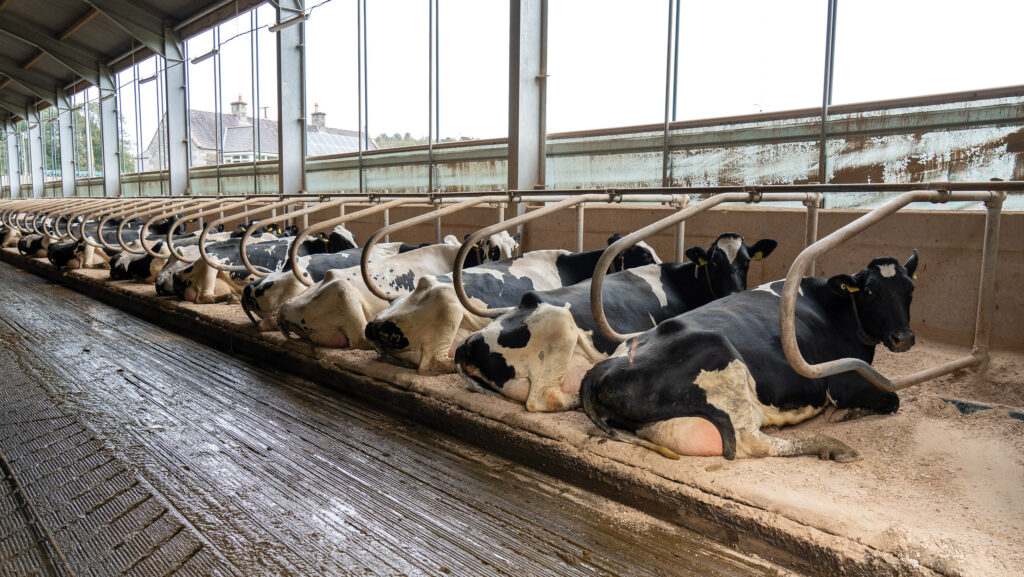 © Angus Findlay
© Angus Findlay A multi-pronged approach with ration consistency and genetics at its core has helped the Campbell family increase kilos of fat and protein from 754kg to 1,000kg a cow since 2016.
Previously, they had prioritised volume, with little consideration for the kilos of solids produced by their Holstein herd at Cally Mains Farm.
When their milk buyer, Arla, started to pay for constituents, they knew their policy needed to change.
They started by buying in a few Jerseys to bring a quick uplift in solids; their long-term aim was to continue to push production, while also improving milk quality in their black-and-whites.
See also: How milk solids increased from fine-tuning genetic selection
By addressing a multitude of factors, they have done just that, increasing yield across the herd from about 10,440kg a cow a year, at 4.03% fat and 3.2% protein in 2016-17, to 11,863kg a cow a year, at 4.65% fat and 3.46% protein in 2023-24.
Herd size has increased in that period from 454 to 530 cows. On average, the Holsteins are now producing 1,000kg of milk solids a head a year.
Farm facts
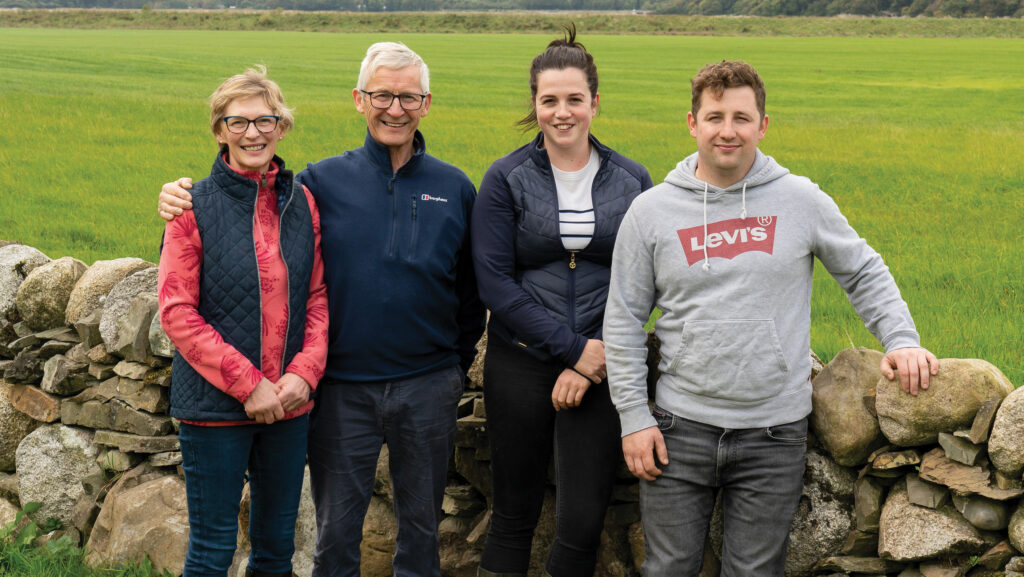
Janice and Allan Campbell with Charlotte Harrison and son Robin – a family partnership aiming for high performance © Angus Findlay
Cally Mains Farm, Gatehouse of Fleet, Castle Douglas
- Family business including Allan and Janice Campbell, son Robin, and his partner, Charlotte Harrison
- 263ha farmed, all grass
- 530-cow herd including 440 Holsteins and 90 Jerseys
- Yielding 11,863kg a cow a year at 4.65% fat and 3.46% protein
- Milked three times a day, supplying Arla
- Rear all own replacements; average age at first calving 23 months
- Sexed and beef strategy using Aberdeen Angus or British Blue bulls
- Beef calves sold to local farmer for rearing
“It’s more output and more income, so a better milk price,” Robin Campbell explains.
“We’re 3p/litre above the Arla base price on average to 31 March 2024.”
This is primarily due to raised milk fat and protein, as well as financial rewards for carbon footprinting and Arla’s Sustainability Incentive.
Increased milk solids benefit the farm’s carbon footprint, which was 0.94kg carbon dioxide equivalent (CO2e)/kg energy corrected milk (ECM) to March 2024, compared with 1.04kg CO2e/kg ECM in 2022.
This improvement is linked to cows efficiently converting dry matter intakes (DMI) into ECM.
In fact, the herd is producing 1.52kg ECM/kg DMI, which is above a target of 1.4kg ECM/kg DMI.
Kite’s 2023 Efficiently Achieving 1,000kg Report stated that every year-round calving, predominantly housed herd should be targeting 1,000kg of combined fat and protein a cow a year to help maximise returns and sustainability.
The report highlighted key success factors on farms, including Cally Mains, achieving these levels of performance.
The Campbells have raised constituents by focusing on five main areas:
1. Compact feeding
Adopting compact feeding has had a marked impact on yields and milk solids thanks to improved ration consistency, less sorting from the cows and better rumen health.
Compact feeding involves soaking the concentrates in water for about 12 hours before mixing them with the forage part of the diet. The aim is to create a consistent ration that is hard to sort.
At Cally Mains Farm, straights and a premix are soaked overnight, combined with the forages in the mixer wagon in the morning and mixed for about 10 minutes.
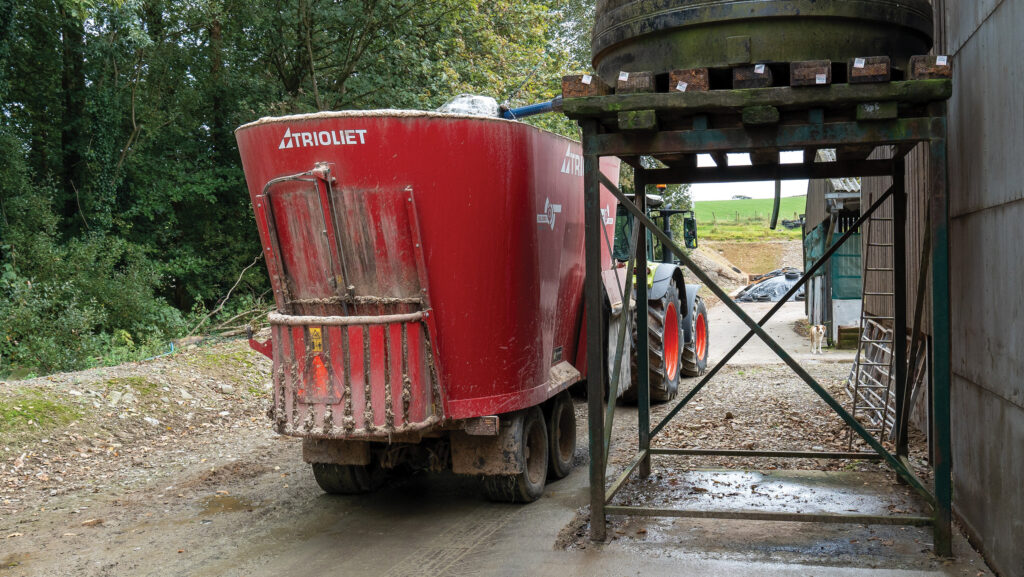
© Angus Findlay
The diet includes maize meal, rapeseed meal, soya hulls, caustic wheat, moist feed (Trafford Gold), protected fat, minerals, a rumen buffer, chopped straw and grass silage.
Liquid inclusion will be tweaked according to silage dry matters (DM) to deliver a total ration DM of 34%. Currently, 20kg of water a cow and 4.4kg of whey a cow are used.
The farm’s nutritionist, Joss Fawcett of Kite Consulting, says compact feeding allows total dietary sugar and starch levels to be safely pushed to 28-30%, which maximises yields.
Making sure every bite is the same promotes good rumen function and reduces the risk of acidosis, which translates into production and milk solids.
2. Quality silages
Silage is cut on a multicut system with a view to optimising forage quality.
The aim is to harvest four to five times a year with a 30-35 day gap between cuts.
On average, this has resulted in a 1MJ/kg DM uplift in metabolisable energy.
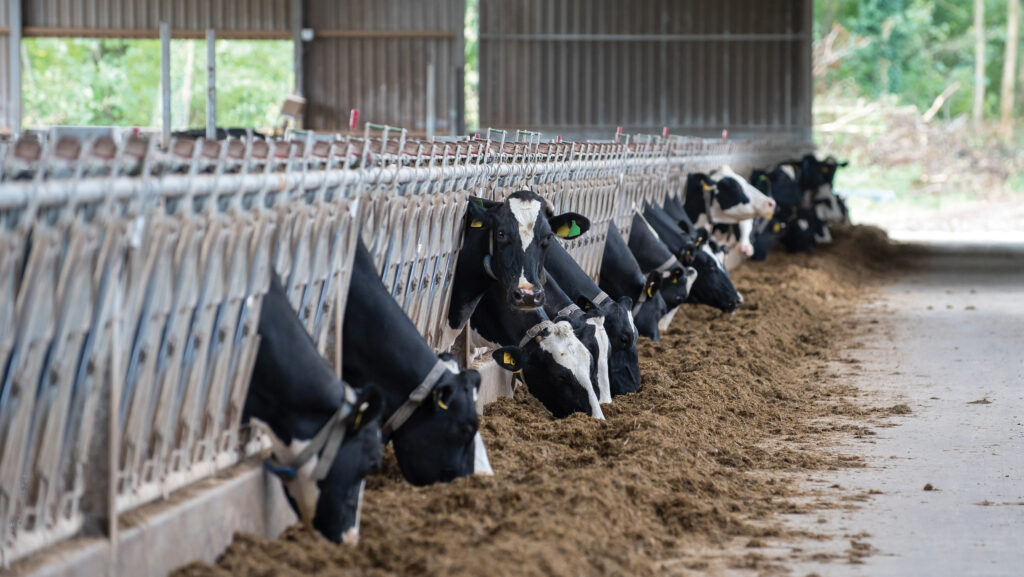
© Angus Findlay
The Campbells have also chosen to make drier silages of about 35-40% DM, which they believe reduces the risk of acidosis.
The whole farm has also gradually been reseeded with perennial ryegrasses suited to this cutting regime.
Joss says producing high-energy silage with minimal levels of non-digestible fibre drives intakes and means cows will produce more milk from every mouthful.
Robin agrees: “It stands to reason you get better production from it, and quality,” he says.
3. Genetics
With up to 50% of a cow’s ability to produce high milk solids due to genetics, according to Kite, breeding has proved a key focus at Cally Mains Farm.
“We’re picking high-production bulls with a positive [rating] on kilos and percentage of fat and protein,” Robin explains, adding that females are genomically tested and selected for constituents.
The Campbells look at profitable lifetime index (PLI) but favour the US index Net Merit as they judge it be weighted more towards yields and constituents (39% versus 34% for PLI).
Rose Jackson, who co-authored Kite’s 2023 report, says there is huge potential for farmers to make big gains by selecting for production traits, as they are more heritable than health and fitness.
At Cally Mains Farm, cows and heifers are exceeding their genetic potential for production, thanks to management and feeding.
Now the Holsteins are producing more solids, the Jerseys in the herd will be gradually phased out.
4. Cow comfort
Allan believes optimising cow comfort and providing plenty of space allows cows to express their full genetic potential.
“In 2022, we built a new shed for the fresh cows, which has made a big difference to cow comfort.
“It’s given us more feed face and space per cow,” he says, explaining that the shed includes wide passageways and comfortable mattresses and has allowed other buildings to be de-stocked.
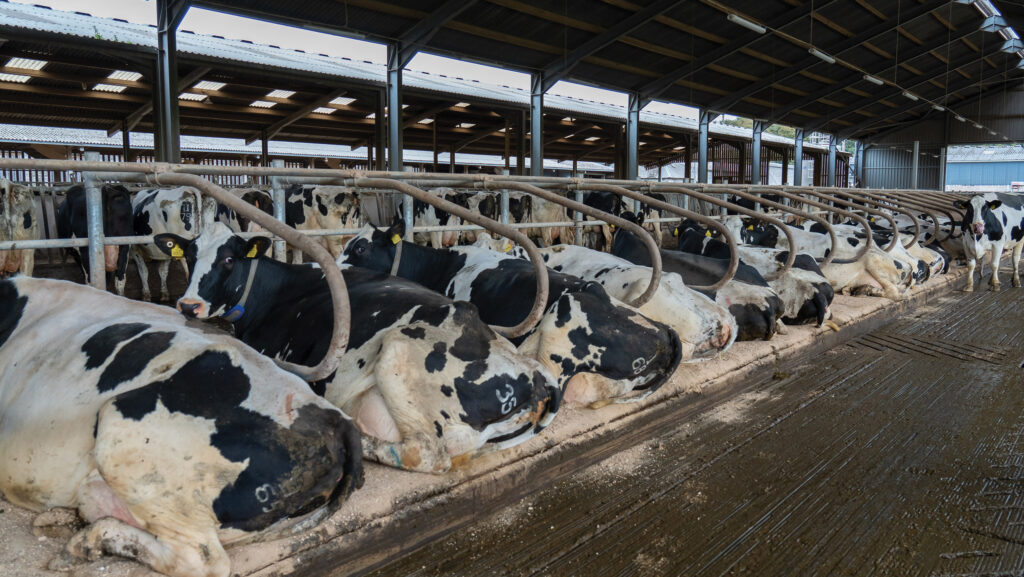
© Angus Findlay
Feed areas have also been extended in existing sheds to provide more space, which should further help intakes.
Heifers are managed in a separate group pre-calving and through their first lactation to reduce stress.
5. Calf rearing
Getting heifers off to the best possible start and feeding high levels of calf milk replacer are viewed as essential for future production.
Kite identified feeding more than 1,000g of calf milk replacer a calf a day as a key success factor in herds achieving 1,000kg of milk solids a head a year.
This early management impacts genetic expression and primes the calf for lifetime production, says Rose.
Calves receive 4-5 litres of colostrum within the first four hours of life – ideally within the first hour – and it must measure at least 25% on a Brix refractometer.
Milk feeding rates have recently been increased so calves are receiving 3 litres twice a day by the time they are five days old.
They move onto automated milk machines at two weeks old, building up to 1,040g of calf milk replacer a calf a day across four feeds.
